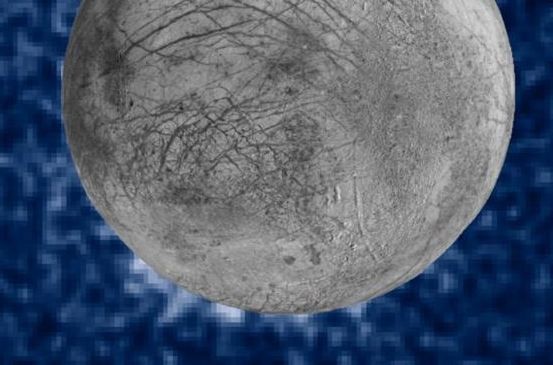After NASA announced that it had discovered "surprising activity" on Jupiter's moon Europa, the space agency has now clarified that water plumes are bursting beneath its icy shell. According to scientists, the discovery ignites a possibility of the existence of extraterrestrial microbes.
NASA scientists had been observing Europa in silhouette using ultraviolet radiation, and that is when they noticed evidence of what is alleged to be plumes. With the naked eye, one is only able to see Jupiter as a bright light behind the moon.
In a press briefing, lead researcher William sparks said that the discovery meant that NASA could easily explore Europa's ocean for signs of extraterrestrial life by scanning for any organic chemicals. The plumes, if proven to exist, will help the agency carry out experiments without necessarily having to dig into the miles of ice, according to The Guardian.
NASA presumes that the plumes are made of ice particles and water vapor because that is what mostly makes up Europa. The agency substantiates its presumption by asserting that the wavelengths it observed using ultraviolet radiation are the exact ones that water molecules appear.
This is not the first time that NASA is finding something peculiar on Jupiter's moon. In 1979, the Voyager spacecraft showed evidence of cracked ice on the same moon in specific regions, resembling the ice floes on Earth. In the 1990s, the Galileo mission also confirmed the presence of an ocean under Europa's crust.
Another study this year hypothesized that Europa produces more oxygen than hydrogen. This coupled with the 2014 study, which said that the moon has plate tectonics, renders Jupiter's moon as having qualities similar to those of Earth.
According to Wired, the discovery has shifted scientists' understanding of bodies that can be considered habitable in the solar system. Even if Europa turns out not having any signs of life, researchers can now have plenty of more places to look.
Europa is one of the most reflective bodies in the solar system, about the size of Earth's moon, and is warmest at about -260F (-160C). It is one of the bodies with the rarest qualities in the solar system: evidence of abundant liquid water, energy generated by tidal heating, and a rocky core that has the likelihood of harboring chemicals.
Should NASA prove that Europa has water, organic chemicals, and energy, the moon will have the basic building blocks that developed into life on our planet. Here is a clip showing what Europa's plumes are like:



























